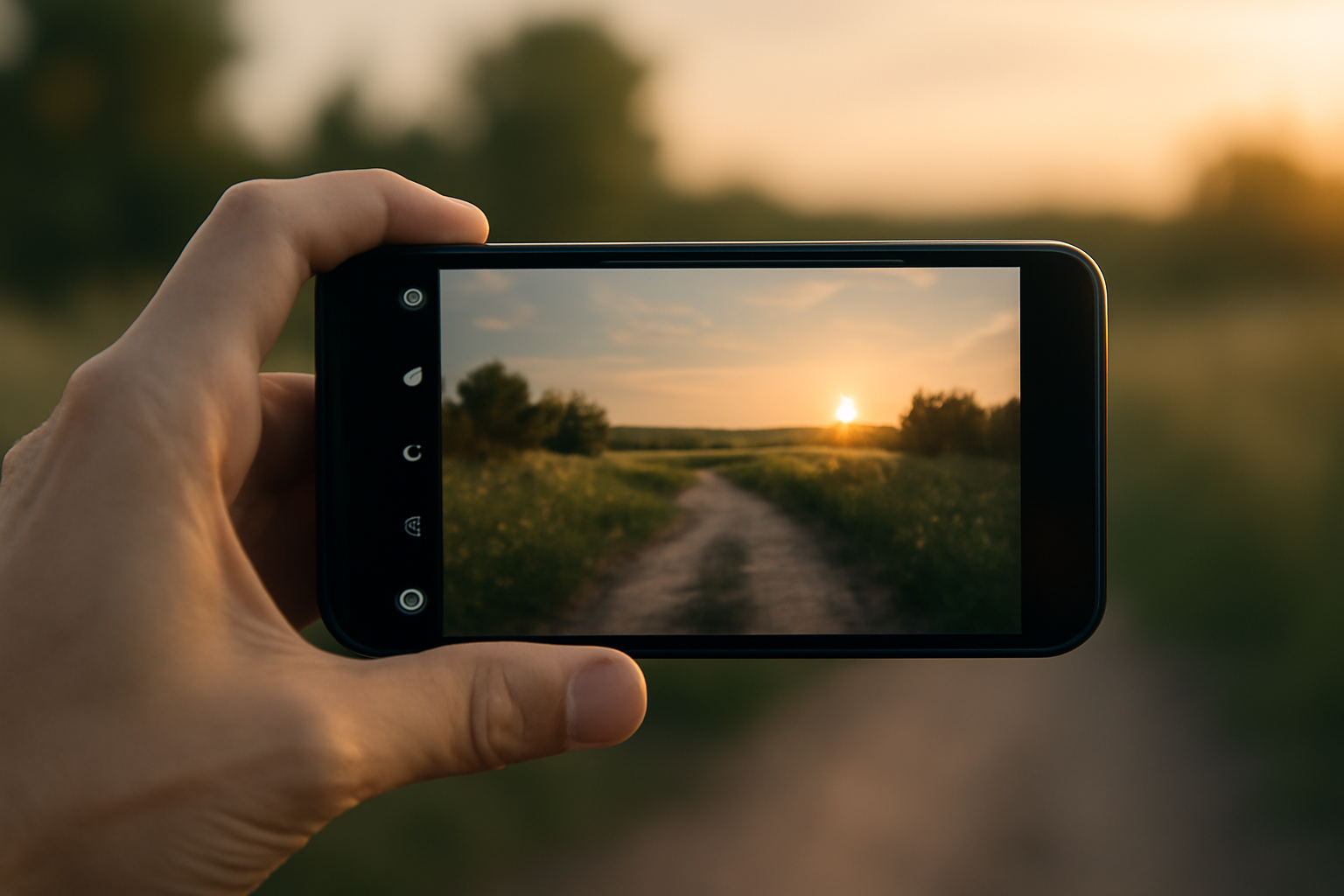Turning your love for photography into a full-fledged career is a dream many share—but few pursue with a plan. The idea of capturing moments, telling stories, and earning a living through images is both thrilling and intimidating. However, with the right mindset, preparation, and business acumen, this dream can become a sustainable and rewarding reality.
This guide offers practical, experience-based insights for photographers—whether you’re just beginning or looking to take your skills to the next level. Here’s how to build a photography career rooted in purpose, creativity, and long-term success.
Define What “Success” Means for You
Before diving into logistics, take a moment to reflect: what does a “successful photography career” look like to you?
Is it shooting weddings around the world? Building a thriving portrait studio in your hometown? Selling fine art prints or teaching photography workshops online?
Success is personal. Clarifying your version helps you:
- Set specific, motivating goals
- Align daily actions with long-term vision
- Filter opportunities that don’t serve your path
For travel photographers, success might mean combining freedom and income while exploring new cultures. For others, it’s about consistency, community impact, or creative expression.
Write it down. Your “why” is your compass.
Remember that success may evolve. What feels right today might shift in five years—stay flexible, but remain focused.
Build a Strong Portfolio That Speaks
Your portfolio is your visual resume. It tells people not just what you do, but how you see the world.
Focus on quality, not quantity. Showcase your best 20–30 images that reflect your style and niche.
Tips to make your portfolio effective:
- Group images by theme or project
- Maintain consistent editing and color grading
- Include a variety of compositions and lighting situations
- Show real client work if possible (with permission)
A clean online portfolio—on platforms like Squarespace, Pixieset, or Format—is essential. Avoid cluttered designs or too many categories. Let your work shine.
Also, create a PDF version for potential clients who may want to see your work offline.
Keep your portfolio updated every few months. Show your growth and current direction.
Find Your Niche Without Losing Versatility
Trying to be a jack-of-all-trades can dilute your brand. Finding a niche helps you attract the right clients and stand out in a crowded market.
Popular niches include:
- Travel photography
- Portraits and lifestyle
- Events and weddings
- Product and food
- Real estate and interiors
- Documentary or editorial
Explore until you find the area that feels natural and exciting. But stay open—many successful photographers have primary and secondary niches. Flexibility is a strength.
Test different types of gigs. Pay attention to what energizes you and what drains you. Passion is a powerful differentiator.
Speak to your niche through your website copy and marketing — use specific language that your ideal client would recognize.
You may even build seasonal niches, such as summer tourism and holiday portraits.
Create a Personal Brand That Attracts
Branding isn’t just about logos—it’s how people perceive you.
Your brand includes:
- Your visual identity (colors, fonts, logo)
- Your tone of voice (casual, elegant, quirky, etc.)
- Your story (why you started, what drives you)
- Your message (what you stand for)
Be intentional about every touchpoint—your website, email signature, social media captions, even how you deliver images. Consistency builds trust.
Use a professional headshot. Share behind-the-scenes content. Let people connect with the person behind the camera.
Clients don’t just hire talent—they hire people they trust.
Consider how your personality comes through in your visual style. Your brand should be a reflection of both your work and your worldview.
Authenticity is what sets you apart. Let your passion show in every interaction.
Master the Business Side
Photography is a creative career—but it’s still a business.
To grow sustainably, you need to:
- Price your work correctly: factor in time, expenses, value, and market rates.
- Use contracts: protect yourself and set clear expectations.
- Track income and expenses: for taxes and profitability.
- Set up a workflow: from booking to delivery.
Consider tools like HoneyBook, QuickBooks, or Studio Ninja for managing clients and finances.
Don’t avoid the business side—embrace it. It gives you the freedom to focus on your art.
Learn to invoice professionally, manage time efficiently, and build long-term relationships with your clients.
Consider joining a local small business association to expand your entrepreneurial knowledge.
Market Yourself Without Being Pushy
Marketing is how people discover you. You can be talented, but if no one knows you exist, your career won’t take off.
Effective marketing for photographers includes:
- Social media: Share consistent content on Instagram, Pinterest, or LinkedIn.
- Blogging: Improve SEO and establish authority.
- Email newsletters: Keep clients and followers updated.
- Networking: Attend events, connect with vendors, collaborate with others.
Offer value in your content: tips, behind-the-scenes, stories from shoots. This builds trust and keeps your audience engaged.
Never underestimate word-of-mouth. Happy clients are your best marketing channel.
Use hashtags, location tags, and engage with your audience regularly to grow organically.
Consider local advertising, such as tourism brochures or partnerships with local guides.
Start Small, Think Long-Term
You don’t need a big break to start your career—you need momentum.
- Shoot for friends and family
- Offer your services at local events
- Do trade-for-portfolio shoots with local models or brands
- Assist experienced photographers
Every small project is an opportunity to improve, learn, and build your reputation. Over time, referrals will flow.
Think long-term. Don’t chase trends—build skills and relationships that last.
Take on passion projects that showcase the kind of work you want to attract. These can be powerful magnets for future clients.
Build a “career map” to plan your growth: 3-month, 6-month, and 1-year goals.
Document your journey through a blog or vlog. Transparency builds audience connection.
Learn Constantly and Stay Updated
The photography world evolves fast. Stay ahead by:
- Taking online courses (Skillshare, Domestika, CreativeLive)
- Reading books and blogs
- Attending workshops and conferences
- Asking for feedback and critiques
Join photography communities—online and offline. Surround yourself with creatives who inspire and challenge you.
Never stop learning. The best photographers are curious, humble, and always evolving.
Use slow seasons to sharpen your editing skills, learn a new technique, or test new gear.
Shadow a photographer in a different niche to stretch your creativity.
Document your process regularly and reflect on your improvements.
Diversify Income Streams
Relying on one source of income can be risky. Diversifying your revenue keeps your business stable.
Options include:
- Paid photo sessions (portraits, weddings, etc.)
- Selling prints or photo books
- Stock photography
- Teaching (workshops, online courses)
- Affiliate marketing or product sponsorships
- Travel photography + tourism collaborations
For travel photographers, offering photo tours or local experiences is a great way to monetize your knowledge.
Think like a creative entrepreneur—not just a photographer.
You can also license your images for commercial use or develop a Patreon for loyal fans who want exclusive content.
Build passive income by offering presets, templates, or eBooks.
You may even partner with local tourism boards to pitch photography content packages.
Handle Challenges with Resilience
Every career has bumps. You’ll face:
- Rejection or ghosting
- Slow seasons
- Difficult clients
- Gear failure
Build resilience by:
- Having backup plans (and backup gear)
- Learning from mistakes without shame
- Seeking support from peers
- Practicing self-care and managing burnout
Remember: consistency beats intensity. Keep showing up. Keep shooting.
The hard days make the wins feel even more rewarding.
Use setbacks as fuel. Reflect on each challenge and treat it as a lesson rather than a failure.
Celebrate small wins often to maintain motivation.
Don’t compare your journey to others—your path is unique.
The Reward – Doing What You Love Professionally
A successful photography career means doing work that excites you—and getting paid for it.
It’s waking up excited for a shoot. Delivering images that make people emotional. Seeing your photos in magazines, on walls, or shared online.
And it’s more than income. It’s freedom, flexibility, and fulfillment.
With intention, effort, and passion, you can create a life where your camera is both your tool and your ticket.
Photography allows you to connect deeply with others, explore the world, and leave a visual legacy that speaks beyond words.
You’re not just documenting moments—you’re shaping how they’re remembered.
You’re creating work that matters—and that’s something no paycheck can measure.
Your Camera Can Open Doors — If You Lead the Way
Photography is more than a skill—it’s a voice. A way to connect, inspire, and make an impact.
If you feel called to pursue it professionally, don’t wait for permission. Start now. Start small. But start with purpose.
Because every successful photographer was once a beginner with a dream—and the courage to follow it.
Your journey begins today. And your next click could be the one that changes everything.








